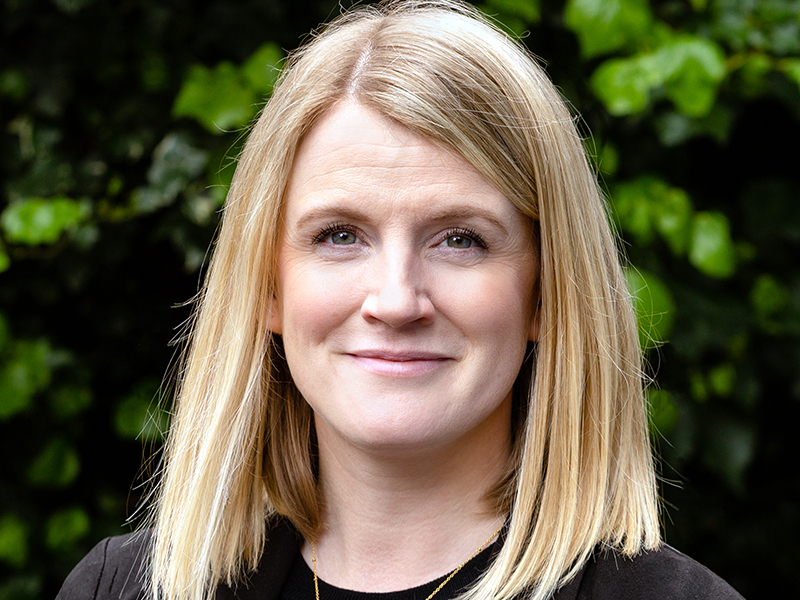Money is tight. Charities are continually grappling with how best to tackle those challenges. And some are considering the structure of their board. Lawyer Helen Kidd explores the issue.
With financial pressures continuing to pummel the third sector - and few signs of them easing - charities in Scotland need to be in the best possible shape to weather them. After all, if you are about to take your bike into Scotland’s more rugged hills or your boat through Atlantic storms, you want to know that its design and structure are up to the task.
A similar concern is cropping up in the sector, with some charities questioning whether the traditional charity governance models are suitable for current conditions and, specifically whether it’s effective for charity boards to be made up entirely of unpaid volunteer trustees.
This is certainly not a criticism of the 150,000 or so trustees in Scotland who play an invaluable role in supporting causes that matter to them. Rather, it’s a question about whether the board model itself is outdated – especially when compared with how businesses and other enterprises operate.
Let’s look at this more closely.
Is the system broken?
Most charities have a complete separation between their paid CEO and their volunteer trustees. The former will report to the board of trustees, and attend its meetings, but will not have the decision-making rights or legal responsibilities of a trustee. At a very basic level, the board will set the long-term strategy, and the executive team will implement it.
The model meets the regulatory requirement for trustees to be unpaid, and provides an easily-understood structure where the executives are accountable to the trustees, and the trustees have ultimate control over the charity’s direction and strategy. In governance terms, it’s attractively clear-cut.
On the other hand, say critics of this board model, it can weaken the charity because the people with the clearest understanding of the charity’s operations, finances, strengths and potential are ruled out from the ultimate decision-making around setting its course.
In contrast, add the critics, having the CEO and perhaps other senior executives on the board – similar to the situation with executive and non-executive directors on a corporate board – would create a safer and more empowering balance of those with granular, operational knowledge and those who offer different perspectives and constructive challenge.
Advantages of reinventing the model
Certainly, there can be advantages in having a charity’s CEO and perhaps senior executives on the board of trustees, as long as key governance issues can be resolved. Their presence on the board can promote increased transparency and fluidity between the trustees and the management team, potentially creating a more unified and cohesive leadership and a better flow of discussions between the layers of the organisation.
Decision-making can also be improved when the people at the coalface can feed into it. However committed and passionate the trustees, it can be hard for them to fully fathom the day-to-day realities of life for the charity’s staff, especially in larger operational charities. Arguably, the executive team should have a clearer idea than the trustees about the feasibility of implementing new strategies, given the resources, people and talents available – or about new opportunities that the board may not spot.
A more unified board and management structure can also accelerate the implementation of decisions, with information relayed more effectively through the organisation.
Key governance issues to resolve
However, including the CEO or other executives on your charity’s board also means dealing with some significant governance issues, and updating your constitution.
- Firstly, there is the issue of remuneration, and the fact that most charities’ constitutions restrict charity trustees as unpaid volunteers. How could you have one individual (the CEO, for example) who is paid to be on the board and another who is not (the voluntary trustee)?
In fact, this can be resolved relatively simply: the executives would be paid for their day job as an executive, not for their role as a trustee. The constitution would likely need to be changed to reflect this.
- Secondly, there will need to be robust policies for identifying, managing and mitigating the risk of conflicts of interest. For example, it would be a clear conflict of interest for executives to be involved in the board’s discussions around remuneration, conditions of employment and anything else that could affect their or their colleagues’ employment contracts or prospects – such as discussions around reorganising, streamlining or merging the charity.
Again, this would need to be embedded in the constitution and/or complementary governance policies, and appropriate risk management measures put in place. - Thirdly, there may be a need to update other governance aspects, such as trustee tenure. The CEO’s place on the board will likely be tied to their employment role, whereas other trustees’ tenure will commonly be based on one or two three-year terms. There may also need to be more consideration of whether the executive team have the capacity to take on the extra legal responsibilities and workload that will come with joining the board of trustees.
The charities regulator OSCR would need to be notified of any constitutional changes. In addition, as part of its ongoing regulation activity, it would want to be satisfied that trustees were meeting their legal responsibilities around, for example, handling conflicts of interest, or that the inclusion of an energetic CEO on the board, for example, did not give them undue influence over the charity’s decision-making.
No single right answer
The governance changes outlined above are all achievable in practice, and our charities team at Lindsays has helped a variety of charities to introduce them or remove them. However, it’s also important to emphasise that this alternative model will not be right for everyone.
Ultimately, it’s an individual decision for each board, which will depend on factors such as the people involved, the size and scope of the charity, the board structure, and the upcoming challenges where the operational know-how of the team would improve decision-making. And whereas having a CEO on the board may work for your charity right now, it could change in future if there are different personalities involved.
The key principle here is that in a sector which faces challenges but is also rich with enterprising organisations and individuals who want to shake up the status quo, there is flexibility to do so.
For those who think the standard board of trustees model is broken or restrictive, there may well be ways to redesign it – as long as you still understand and demonstrate robust governance and meet regulatory requirements.
Helen Kidd is a partner and head of the Charities and Third Sector team at legal firm Lindsays.








I am probably being a little naive, but, in my experience over the last 15 years, the CEO of the organisations I have either worked for or been heading up, have been actively involved in the meetings with the Board of Trustees. The input of the CEO (and the leadership team) is vital for informing the decision-making of the trustees. As you rightly highlight, they are not operational, but through a strong relationship between the CEO, Leadership team, and the Trustees, especially between the CEO and Chair, decisions can be taken that are not unduly swayed by a single person (i.e. the CEO). These relationships are at the heart of good governance and are not about changing the model of governance. The CEO should always be involved in trustee meetings as standard practice, keeping the Board informed, and allowing for decision making that is most beneficial to the organisation. That being said, I do realise that this may not be the case with all organisations!